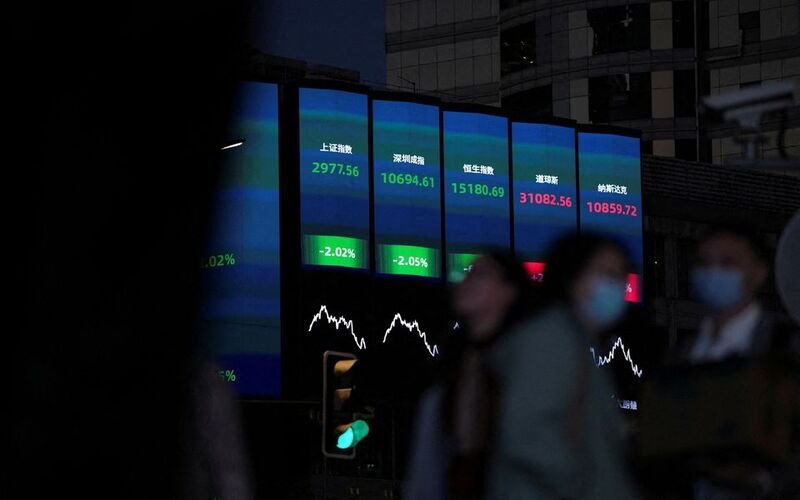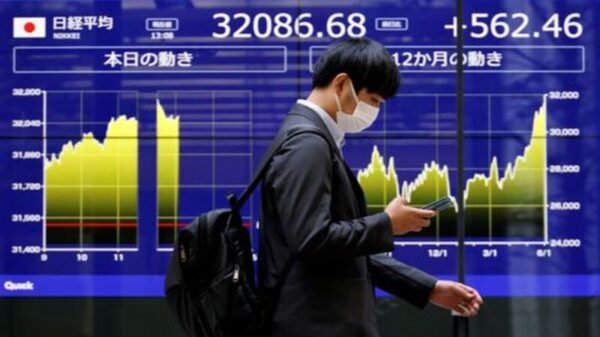Asian shares gained on Friday as the dollar hovered near a two-month high as chances of a debt ceiling resolution and good economic data bolstered the mood. Japan’s Nikkei reached its best level in nearly 33 years.
MSCI’s broadest index of Asia-Pacific shares outside Japan (.MIAPJ0000PUS) rose 0.20% in volatile trade and was set to gain 0.6% for the week, its strongest performance in over a month.
Australia’s S&P/ASX 200 index (.AXJO) climbed 0.66%, while Japan’s Nikkei (.N225) reached its highest since August 1990, during the bubble era.
Nikkei rose 18% in the year, beating other major Asian markets, thanks to good corporate earnings, a recovering economy, and renewed foreign investor interest after Warren Buffett’s involvement.
U.S. stocks rose overnight, anticipating that a debt ceiling solution would be struck soon. Asian-hour S&P 500 e-mini futures increased 0.17%.
Eurostoxx 50, DAX, and FTSE futures rose 0.44%, 0.41%, and 0.23%, respectively, indicating higher European stock openings.
After Biden returns from the Group of Seven conferences in Japan on Sunday, he and House Speaker Kevin McCarthy, the top Republican in Washington, aim to reach a debt ceiling settlement.
“What makes things more complicated this year is that the Democrats and Republicans are so wide apart… negotiations will take a long time because each one is trying to get something out of that negotiations,” said Alexandre Tavazzi, head of CIO office and macro research for Pictet Wealth Management.
This week, China’s economy lost speed in the second quarter, raising concerns about the post-COVID-19 rebound.
China’s blue-chip CSI300 Index (.CSI300) increased 0.20%, while the Shanghai Composite Index (.SSEC) recovered 0.13%.
After Alibaba Group Holding Ltd (9988. HK) posted a lower-than-expected 2% quarterly revenue increase, tech companies drove down Hong Kong’s Hang Seng index (.HSI) by 1%. Yearly, the index fell 1.2%.
“It appears momentum from the reopening may have faded quicker than in other countries and further policy easing may be required,” said AMP chief economist Shane Oliver.
The Federal Reserve is less likely to drop rates before year-end after overnight data showed fewer Americans filed their first unemployment claims last week.
Dallas Fed President Lorie Logan and St. Louis Fed President James Bullard resumed hawkish rhetoric, saying inflation was not dropping quickly enough to suspend interest-rate hikes.
Since March 2022, the Fed has raised borrowing costs to 5.00-5.25%.
CME FedWatch projected a 36% possibility of a 25 basis point Fed raise next month, up from 10% a week earlier.
“It’s still a difficult call, whether they need to hike again or not,” said Singapore’s Fullerton Fund Management head of investment strategy Robert St Clair.
“There’s encouraging signs for inflation across the board, but the one that’s still quite sticky is services inflation,” he said. “Data will drive things.”
Fed Chair Jerome Powell’s panel talk later in the day will help investors predict the central bank’s direction.
The yen rose 0.24% to 138.40 per dollar, lingering near its six-month low of 138.75.
The dollar surged 0.029% against a basket of currencies, nearing a two-month high.
Offshore yuan plummeted to 7.0677 per dollar, the worst since Dec. 2. Analysts expect further weakening due to Fed policies rather than domestic economic weakness.
Brent increased 0.75% to $76.43, while U.S. crude rose 0.65% to $72.33. Gold rose 0.3% to $1,963.59 an ounce.









































Comment Template